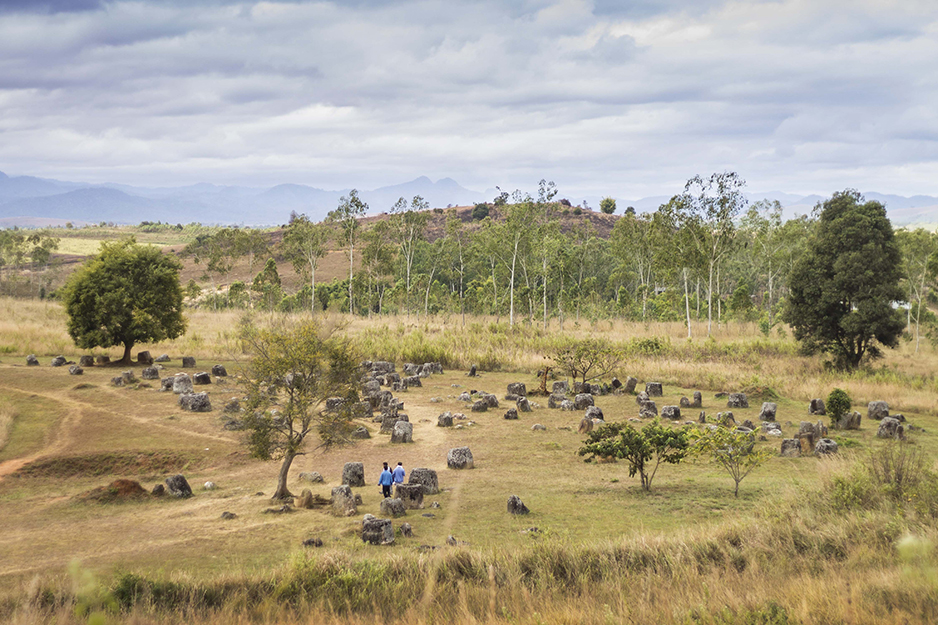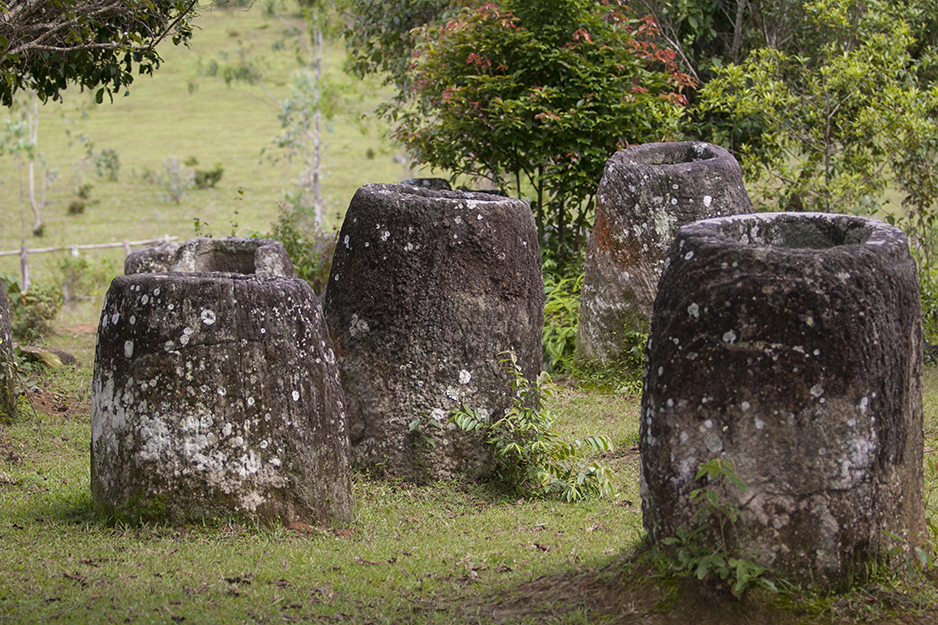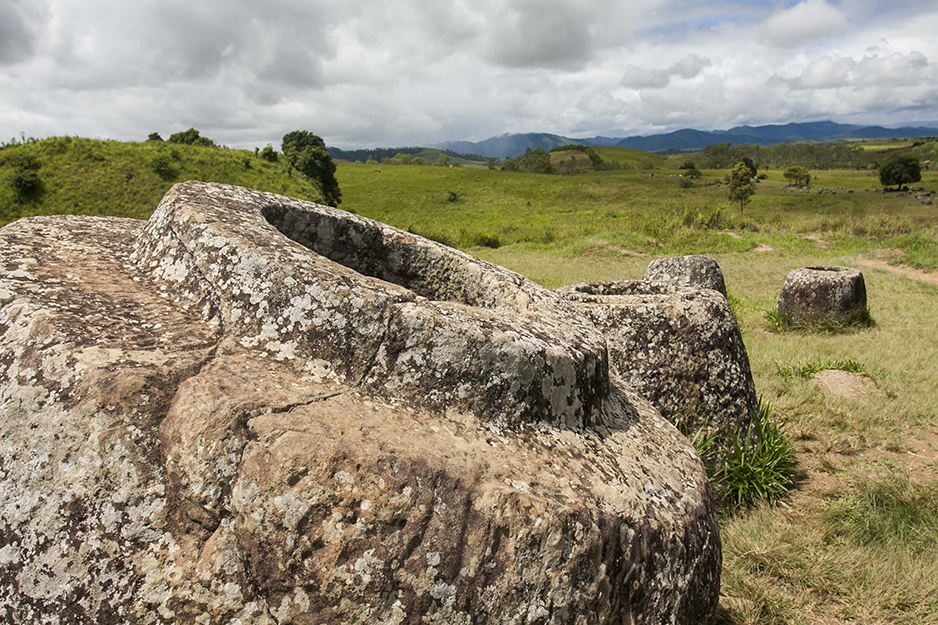World Heritage stone wonders leave a lasting impression.
August 13, 2009, is forever etched in my memory. A few days earlier I had arrived in Phonsavan, the modern capital of Xieng Khouang Province, intending to visit the famous stone jars as an independent traveler. After a few false starts, I overcame the tuk-tuk learning curve and made a triumphant visit to Site 1, on the edge of town, to admire several hundred jars with the kind of awe felt by a child in a candy store. Tired but grinning, I returned to my guesthouse, only to realize that my achievement fell exactly on the 143rd birthday of Madeleine Colani, the French archaeologist born on August 13, 1866, and responsible for the first large-scale documentation of the Plain of Jars in 1931–33. This was no mere coincidence, I told myself. Confident of Colani’s blessing from beyond the grave, I enrolled for a doctorate at the University of London, to study the stone jars of Laos.
The Plain of Jars holds around 2,100 stone jars, spread over more than 100 sites, hosting from one single jar to several hundred units. Though Xieng Khouang hosts the lion’s share of the sites, Luang Prabang Province is home to around ten sites, concentrated in Phou Khoun District. Even after centuries of exposure to the elements, hundreds of jars still bear witness to the skill of the ancient masons, expertly carved in diverse rock types, from soft sandstone and limestone to hard granite and conglomerate. Three locations in Xieng Khouang (Sites 1, 3, and 52) hold close to 1,000 jars, almost half of the entire jar inventory.

Barrel-shape is the basic form but there are varieties in the details, like the distinctive lip rims of some jars, and a few decorated with human or animal carvings – generally static figures with arms aloft. Out of the entire stock, three units are double-ended, carved with one aperture at each end, while dozens of others, particularly in Phoukout (Xieng Khouang) and Phou Khoun, are carved with shallow cavities and narrow apertures. There are variations in size, too, with a few miniature jars – barely one meter long – dwarfed by three-meter tall units.
Nineteenth-century visitors to Northern Laos were in awe of these magnificent stone creations. For Comte François Pierre de Barthélemy, who traveled to Xieng Khouang in March 1896 as part of a fact-finding mission on behalf of the French Ministry of Education, the jars were vestiges of a very ancient civilization and transporting them to their current location would have required “very powerful machines or thousands of coolies”. Years later, Sidney Legendre, a wealthy American who spent the Christmas festivities in Xieng Khouang in 1931 as part of a year-long tour of Indochina, could not resist the temptation to lower himself into one of the jars, finding himself “completely lost to sight”.
The stone jars have been silent witnesses to countless historical events, suffering incursions late in the 19th century at the hands of defeated Yunnanese marauders who extorted taxes and “terrorized inhabitants”. More recently, opposing factions vied for control of the Plain of Jars during the Indochina War, resulting in a sandstone jar being flown to the USA as a gift to the American people from a general, as a testimony of his authority in briefly regaining control of Xieng Khouang in April 1970.

On July 6, 2019, the Plain of Jars was inscribed on UNESCO’s list of World Heritage Monuments, in the Cultural Sites category, in recognition of their ancient creators’ genius. The Plain of Jars is the third UNESCO World Heritage listing for Laos, following the 2001 inscription for Vat Phou and the 1995 listing for the Town of Luang Prabang. To receive this coveted accolade, sites must be of outstanding universal value (OUV) and meet one or more of 10 selection criteria. The Plain of Jars was awarded World Heritage status for representing “a unique or at least exceptional testimony to a cultural tradition or to a civilization which is living or which has disappeared”.
The process for this crowning achievement began in 1992 when the Plain of Jars was placed on the Tentative List of World Heritage Monuments through an application submitted by the then Department of Museums and Archaeology of the Ministry of Information and Culture. The journey has been long and fruitful, enriching our knowledge of the stone jars and enabling the discovery of dozens of new sites, from Luang Prabang Province to Nong Het, on the eastern edge of Xieng Khouang.
This listing will certainly ensure the continued preservation and study of the jars and unlock more of their mysteries in the future.
GETTING THERE
Lao Airlines has daily flights to Xieng Khouang from Vientiane.
Text BY Dr. Lia Genovese
PHOTOGRAPHS BY Phoonsab Thevongsa



 ລາວ
ລາວ
